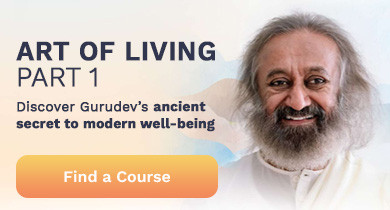By Sejal Shah┃Posted: February 19, 2019
In this entry on discovering new and modern ways of practicing the classical Yamas and Niyamas in our day to day lives, we explore Saucha: the first Niyama of Yoga that can help us to deeply cleanse our body and mind, allowing us to experience great physical purity, mental clarity, emotional stability, and spiritual fulfillment.
Understanding the foundation of Saucha
While the yamas are about our relationship with others, the niyamas are about the relationship we have with our Self. The first of the five niyamas is saucha.
Saucha is a Sanskrit word often translated as “purity” or “cleanliness”. It refers to cleaning at many levels - the physical and mental levels, as well as the internal and external. If correctly practiced, saucha has a profound effect on our total well-being.
Maharishi Patanjali says, शौचात् स्वाङ्गजुगुप्सा परैरसंसर्गः॥II.40II
Sauchat Swangajugupsā paraihasamsargah ॥II.40II
Sauchat = By cleanliness, Swa = own, anga = body, jugupsā = detastation or disgust or repulsiveness, paraih = and with that of others, asamsargah = cessation of contact, non-association
By personal hygiene and cleanliness of your own physical body (and mind), there will be a disinclination towards the body, and there will be cessation of craving for contact with the bodies of others.
Gurudev Sri Sri Ravi Shankar beautifully explains the deeper aspects of this verse: “By personal hygiene and cleanliness, the attachment to your physical body is lifted up. You become more aware of your inner body, inner self, the light that you are.”
It’s not that there’s some giant finger in the sky wagging at all of us for not being pure enough! With the practice of saucha, the temporary layers of impurities of any kind (physical or mental) are shed off so that we become aware of who we really are. In essence, we are all pure.
Yogi TKV Desikachar reminds us:
“When cleanliness is developed it reveals what needs to be constantly maintained and what is eternally clean. What decays is the external. What does not is deep within us.”
There are two aspects of saucha. One is the disinclination for one’s own body, and two is the disinclination towards another’s body.
Cravings of and for the body begin in the mind, because we do not totally understand our bodies. Beneath the skin there are bones, flesh, nerves.The lack of understanding of the body can even result in obsession, where suddenly we cannot be satisfied by anything. Obsessions take over us, and sometimes this obsession escalates into violence. So many crimes related to sex have been happening in this world. Sometimes people kill others just for the thrill of it. These incidences, according to the principle of saucha, are due to the lack of understanding we have towards our bodies.
When we become aware of our real self, beyond the physical body, a beautiful shift happens. A natural disinterest towards the physical body develops as we fall in love with the self. It’s not a disregard towards it. In fact, we start to see it as a sacred space which houses the real self, or the divine consciousness. “The body is your temple. Keep it pure and clean for the soul to reside in.” said the late Dr BKS Iyengar. With practice of saucha, a sense of honor and respect replaces the attraction to or cravings of the physical body.
Secondly, when we feel like we need constant touch, when we’re constantly craving and relying on physical intimacy (whether sexual, romantic, or platonic), then we are not letting our energy stand on its own: and thus we are lost, our real self is lost. If we are constantly touching others, we cannot know our real selves. Practicing soucha helps us to keep some much needed personal space and time. It gives us the opportunity to learn what our strengths are, what our real weaknesses are, what our true spirit is.
To me, this is the essence—recognizing our inherent purity—of the practice of saucha. Saucha is not a blind ritual of untouchability or shunning ourselves or indulging into obsessive cleansing. Once we realize this, rather than being restrictive, the concept of saucha becomes in fact, liberating.
What are the benefits of Saucha?
Explaining the benefits of Saucha further, Maharishi Patanjali says,
सत्त्वशुद्धिसौमनस्यैकाग्र्येन्द्रियजयात्मदर्शन योग्यत्वानि च IIII.41II
sattva shuddhi saumanasya ekagra indriya-jaya atma darshana yogyatvani cha IIII.41II
sattva = purest of subtle essence -internal being, shuddhi = purification of, saumanasya = clarity or harmony of the mind, ekagra = one-pointedness, indriya-jaya = control of the senses (indriya = 5 senses; jaya = control, regulation, mastery), atma = of the Self, darshana = realization, yogyatvani = capable or qualified for, cha = and
In addition to a sense of honor and respect towards the physical body and keeping it engaged for knowing real self, establishing a the practice of saucha also brings five more benefits:
- Purification of the subtle physical and mental energy or essence (sattva)
- Harmony in the mind, cheerfulness, clarity in thinking, purity of intellect
- One-pointedness or focus
- Conquest or mastery over the senses
- Qualification or capability for Self-realization
Aren’t all these things we want in our lives? We do. Practice of saucha is the key.
5 modern ways to incorporate saucha into our lives
While taking our daily shower, brushing our teeth, fasting, being mindful of what we eat and drink, keeping our surroundings and environment clean, and refraining from seeing violent movies, or provocative images, are some known ways of practicing saucha, today we explore some more profound ways to engage in this powerful practice.
1. The Yogic Shatkarma
The tradition of yoga recommends various practices that clean the body and mind, making us more sensitive to the subtler aspects of our being. By practicing them, we can begin to control those subtle energies--the movement of prana--and gradually master the mind. Some of the practices are familiar, like asana and pranayama, while others are less widely taught and a little more complex, like Shatkarma, which works at a very deeper levels to clean the body internally, removing stored toxins and impurities.
Shatkarma (Shat =6, karma = actions), also known as Shatkriya, are 6 secret yogic practices involving the purification of the nadis, body and mind. These are mentioned in the ancient yoga text Hathayoga Pradipika, Section II 21-31.
- Neti (Nasal and sinus wash)
- Dhauti (Gastric+Intestinal Wash) includes two Varisara (Shankhaprakshalan) and Vamana
- Nauli (Abdominal massage)
- Basti (Lower GI Cleaning)
- Kapalabhati (Skull Shining Breath)
- Traṭaka (Cleansing of eyes)
“Water should run in and on this body – both inside and outside. You have to drink enough water and let it run through your system. Water is the greatest purifier for this physical body,” says Gurudev Sri Sri Ravi Shankar. In the above 4 shatkarmas, water is passed through various orifices and organs of the body which results into deep cleansing.
Learn some of these techniques and experience their profound cleansing effects on both the body and mind at the Sri Sri Yoga Deep Dive Retreat.
2. Solitude
Solitude gives you an opportunity for self-discovery, exploring questions like: Who am I? What is the purpose of my life?
Solitude, even through your social media channels, can also encourage purity and the ability to realize oneself. It can hone your mind and bring about greater clarity in thinking.That is why so many of the great works of the world have been created or conceived of in solitude. When you are depressed or unhappy, you want to isolate yourself. This is natural tendency: when we are not in contact with anybody for a day or two, we see that our minds are clearer and cleaner. These are the effects of saucha.
Developing a routine that accommodates shorter periods of solitude or silence, and makes room for longer experiences once or twice a year, will definitely improve your mental strength, creativity, empathy, and productivity: don’t take our word for it, though! Science is beginning to explore the effects of silence and back up the positive effects practitioners have been experiencing for centuries.
3. Compassion walk
Go for a compassion walk during which you make a conscious effort to see everyone, regardless of their behavior, as doing the best they can in that moment. Instead of making any judgments, try assuming they are struggling in the same ways you are, and send a silent prayer for them to suffer less, to have opportunities to learn and grow. This is a great way to develop a non-judgemental attitude towards all, and to foster emotional purity and stability.
4. Adapt minimalism
This is a great way to keep not just your physical spaces, but also your inner space, decluttered. Start with clearing and organising the desk at work, your wardrobes, and then the whole house. Toss out everything that you don’t use or need and see how lighter you feel from within. This is also is the powerful way to practice of aparigraha—the 4th Yama.
5. Breathe and Meditate
In his commentary, the late Georg Feuerstein, one of the most read and respected yoga scholars in the world today, emphasizes that Maharishi Patanjali urges us to be “on one’s guard” with respect to the body. To take good care of it, so that it becomes a good vehicle for spiritual pursuits and for meditation.
Pranayama is a sure way to cleanse and purify from within. Practicing Sudarshan Kriya daily clears the internal energy channels and cleanses the nervous system, and is known to naturally lead you into deep state of meditation, giving you glimpses of pure stillness.
All of these approaches feed both the body and mind in healthy ways, and if practiced regularly, gradually replace the old unhealthy patterns embedded in the subconscious mind. As we become established in saucha, we make room for the radiant health, light and wisdom to emerge and illuminate our lives.
What does saucha mean to you – on and off the mat? Join in the conversation on Facebook or Instagram or email us at blog@us.artofliving.org.
Sejal Shah, E-YRT 500 Sri Sri Yoga Teacher, YACEP, Art of Living Teacher, NYU Post Graduate Medical School approved Yoga-CME retreat facilitator, Mind-Body Wellness Writer, Homeopath





























